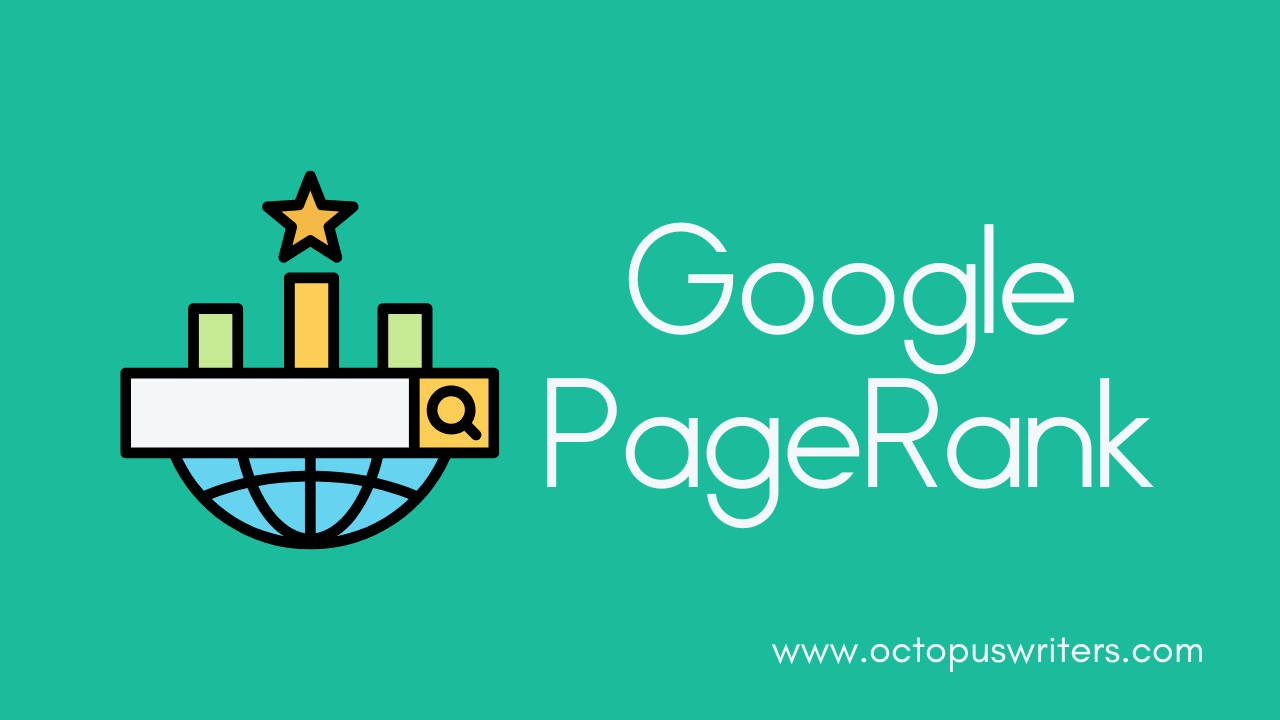Google PageRank revolutionized search engine algorithms by ranking websites based on the quality and quantity of backlinks. This approach helped Google deliver more accurate and relevant search results, catapulting the company to the forefront of the search industry. While Google no longer publicizes PageRank scores, its underlying principles are still core to modern SEO.
In this article, we’ll explore the history of PageRank, how it works, and which factors still influence website rankings today. We’ll also look at how you can optimize your website by applying these foundational concepts. Let’s dive deeper into Google PageRank with OctopusWriters as we explore its evolution, key ranking factors, and how to leverage these insights for better SEO performance.
The History Of Google Page Rank
Larry Page and Sergey Brin, while studying at Stanford in the late 1990s, developed PageRank, a novel algorithm that ranked web pages based on the number and quality of links pointing to them. This approach was a major departure from previous search engines, which focused mainly on keyword repetition. Instead, PageRank viewed the internet as a network of pages connected by hyperlinks. Each link to a page served as a vote of importance, with more influential pages casting more powerful votes.
The name “PageRank” is a playful reference to both web pages and its inventor, Larry Page. What started as an academic exercise soon became the backbone of Google, a company that would revolutionize the way we search online.
Although PageRank was a key innovation, it was not the only factor in Google’s rise. Page and Brin had to develop web crawlers to manage the exploding number of websites and continuously update PageRank as the web evolved. As people attempted to exploit PageRank’s weaknesses, they adjusted the algorithm to maintain its reliability.
While PageRank’s role has diminished and its patents have expired, its foundational principles still inform today’s SEO practices and remain part of the search ranking process.
What Is Google PageRank?
Google PageRank is an algorithm used to rank webpages based on the quality and quantity of links pointing to them. Its premise is straightforward: “If your page has links leading to it, especially from reputable sources, it’s seen as more valuable. Google believes that the most important pages receive the most links from trusted websites. This helps Google prioritize your content in its search results.”
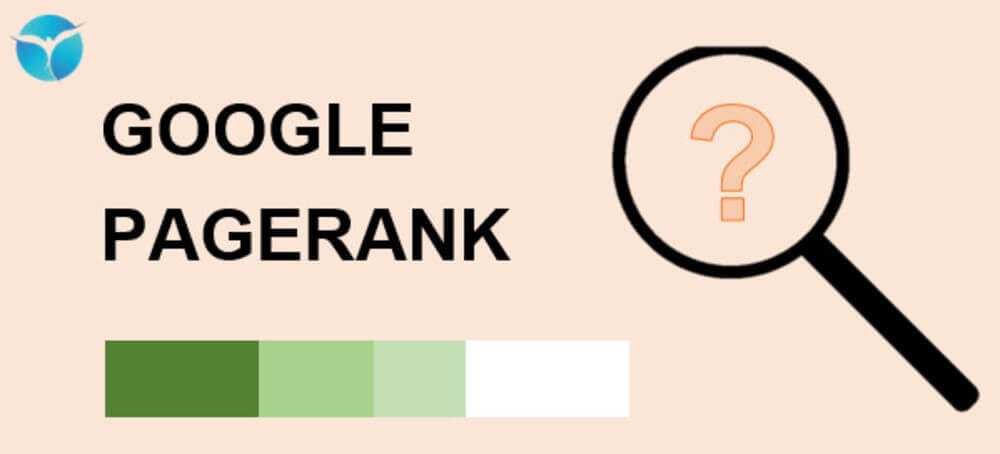
PageRank scores were once visible via Google Toolbar, using a logarithmic scale that ranged from 0 (PR0) to 10 (PR10). A higher score indicated better link quality and authority. Because of the logarithmic scale, even a slight increase in PageRank (like moving from PR4 to PR6) could significantly enhance your website’s influence, sometimes by a factor of 25.
Why Is Google PageRank Important?
At OctopusWriters, we understand how Google PageRank fundamentally reshaped the landscape of SEO by introducing a system that evaluated a webpage’s importance based on its backlink profile.
PageRank has influenced SEO in various ways, particularly through:
Website Rankings
PageRank became a game-changer in determining which pages ranked higher in Google’s search results. As its creators, Larry Page and Sergey Brin, emphasized in their research:
“PageRank is an excellent way to prioritize the results of web keyword searches.”
The algorithm prioritizes pages with high-quality backlinks, treating every link like a “vote” of confidence. However, not all links are equal—those from reputable, authoritative websites carry more weight. This naturally pushes such pages to the top of Google’s search results.
Crawl Budget
PageRank also plays a key role in how Google allocates its crawl budget—the resources it dedicates to scanning and indexing your site. Since search engines can’t crawl every page frequently, PageRank helps determine which pages deserve more attention.
Web pages with higher PageRank scores are crawled more often, as they are considered more important. Google itself has confirmed that URL popularity influences how frequently its bots visit pages.
Canonicalization
PageRank is also helpful when Google decides on the canonical version of pages with duplicate content. If there are several versions of the same page, the one with the most internal links (which pass PageRank) and other signals (such as canonical tags or sitemaps) will likely be chosen as the primary version.
Though PageRank is one of many factors in this process, it still plays a significant role in making sure users land on the most relevant page.
How Is PageRank Determined?
Google PageRank relies on a mathematical algorithm that views each link to your site as a vote in your favor. Your website is effectively competing in a popularity contest with other sites that have similar content and keywords. The site with the most backlinks, particularly the most influential ones, earns a higher position in the rankings.
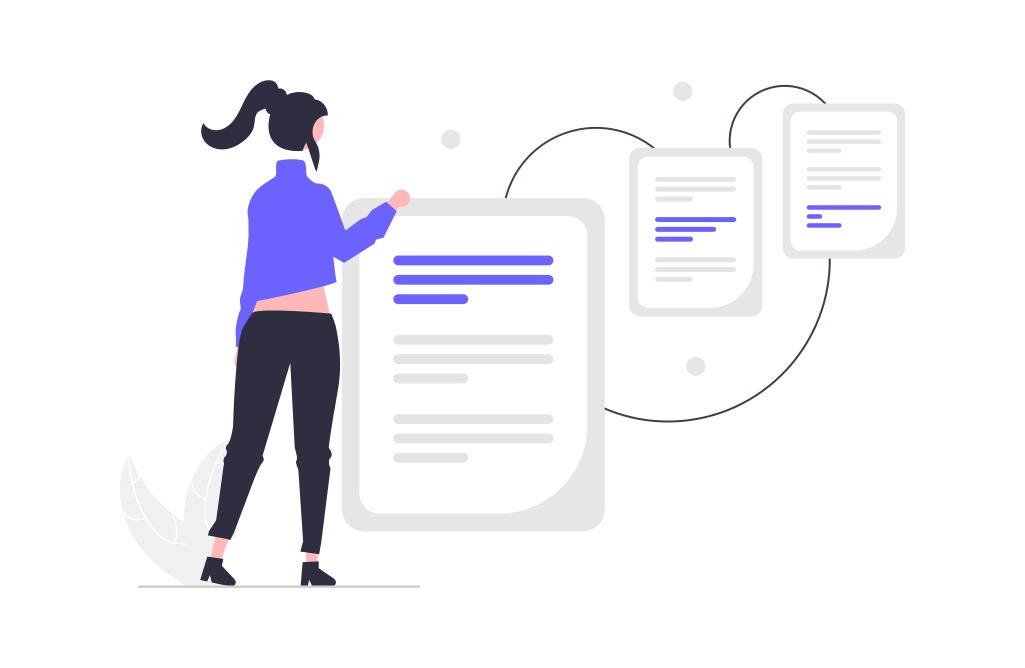
To boost your ranking, it’s important to attract high-quality backlinks from reputable sites. Every link is a vote for your site’s credibility, but not all votes are equal. Links from well-established, authoritative websites carry far more influence in determining your rank than a large number of lesser-quality links.
12 Factors That Influence Google PageRank
Number And Quality Of Backlinks
PageRank is primarily driven by the quality and number of backlinks pointing to a webpage. However, not all backlinks hold the same value. Links from highly trusted websites are much more influential in signaling to Google that your content is reliable and authoritative.
To improve your Google PageRank, focus on obtaining backlinks from credible sources like government agencies, recognized health organizations, or other well-established institutions. These types of backlinks tell Google that your content is valuable and trustworthy, which will help raise your ranking. If acquiring such high-level links is challenging, concentrate on securing backlinks from reliable industry publications or respected blogs in your field. Though they may not have the same wide-reaching authority, these sources still offer significant value within their niche.
The key to attracting these valuable backlinks is by producing engaging and high-quality content. By creating resources like detailed guides, case studies, or informative infographics, you can encourage other websites to link back to your content. This, in turn, will help improve your Google PageRank and increase your visibility in search results.
Anchor Text
Anchor text in hyperlinks provides valuable clues for both users and Google about the content of the linked page. It is essential to make the text descriptive so users know what to expect. For instance, “SEO guide” clearly signals the topic of the linked page, while vague terms like “click here” offer no insight into what lies ahead. Is it a blog post, a landing page, or something else? Optimization is important, but be cautious not to over-optimize. Overuse of exact match anchor text can cause Google to flag your site and harm your rankings.
Internal Links
Internal links are an effective way to connect different pages on your website, helping to spread PageRank throughout your site. When you use them strategically, you create a network of interrelated pages that share link equity, often called “link juice.”
The more internal links a page receives, the higher its PageRank can grow, which boosts its visibility. However, be mindful of outbound links. The more external links a page has, the more PageRank it passes to those linked pages, potentially weakening its own ranking. A good balance between internal and external links will keep your website’s PageRank strong.
Probability Of A Click On The Hyperlink
The PageRank algorithm by Google factors in the probability that users will click on a link. Pages that are more likely to receive clicks are considered more valuable, and their PageRank reflects this importance.
This is heavily influenced by user behavior. Google has studied how users interact with links and adjusts rankings to promote those that are frequently clicked. The placement of the link is a major influence:
- Highly visible links, often located at the top of a page with relevant anchor text, pass more PageRank.
- Less visible links, such as those toward the bottom of a page, pass a smaller amount of PageRank due to lower click probability.
By placing important links in prime locations with effective anchor text, you can optimize your site’s link value and ranking potential.
Link Spam Techniques
At OctopusWriters, we know that improving your Google PageRank can be challenging, but using link spam tactics is not the solution. Google explicitly warns that “any links intended to manipulate rankings in Google Search results may be considered link spam,” and engaging in such practices can lead to heavy penalties.
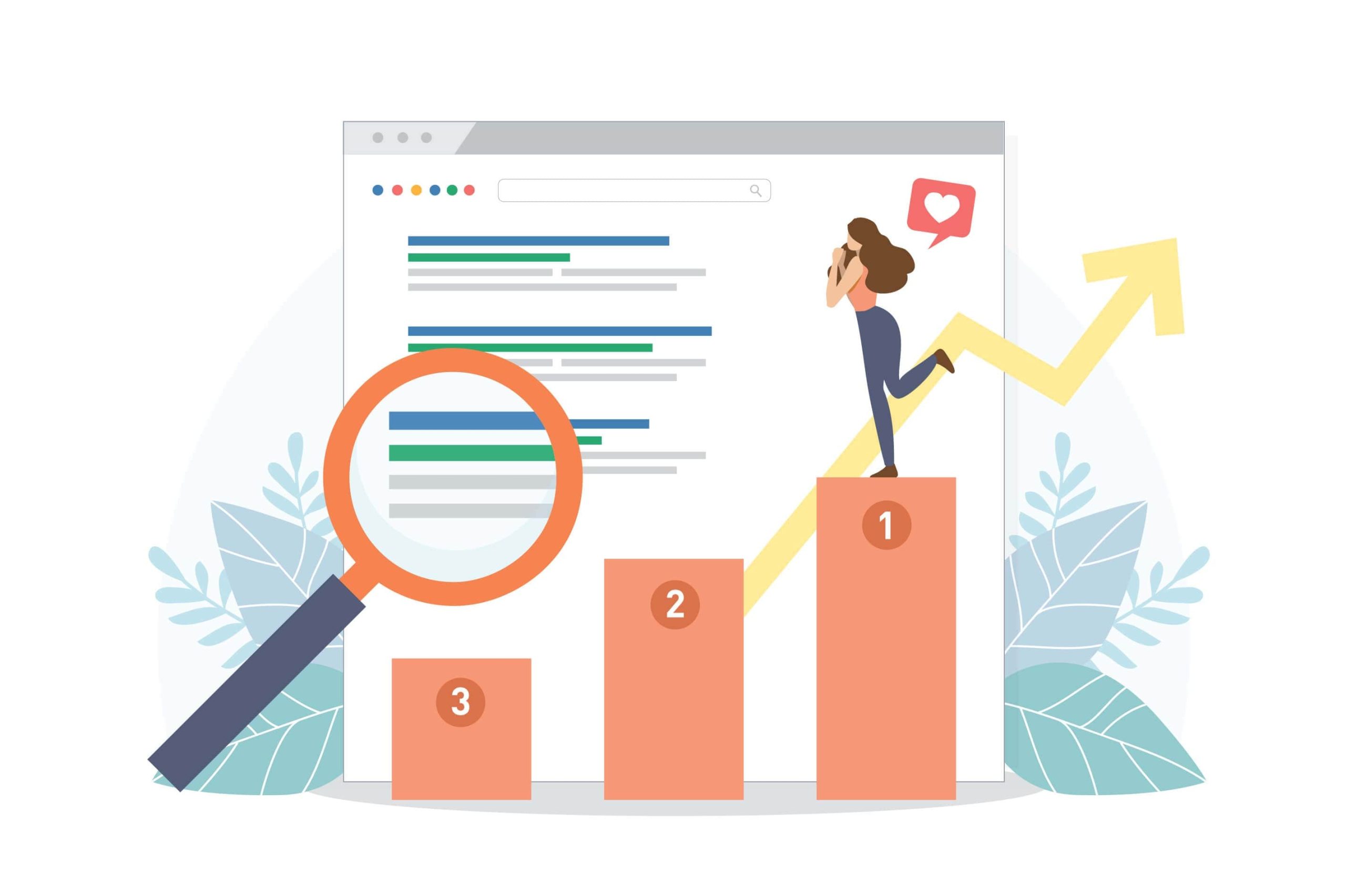
Some common link spam techniques include:
- Buying or selling links for SEO manipulation.
- Embedding links in footers or templates, which appear site-wide and inflate link counts.
- Utilizing automated tools to generate a high volume of low-quality backlinks.
- Participating in link exchange programs, where websites agree to trade links artificially.
- Setting up link farms, collections of irrelevant, low-quality sites that exist only to provide backlinks.
These practices can result in Google penalizing your site, reducing its visibility and damaging your SEO efforts. We encourage white-hat SEO practices like earning quality backlinks through valuable content and genuine relationships. Google rewards natural link-building efforts, where sites link to your content because it offers real value, not because of manipulation.
For sustainable success, stay informed about Google’s spam guidelines and avoid risky SEO practices that can harm your site’s reputation.
Nofollow Link Attributes
Google created the nofollow attribute to instruct search engines not to pass PageRank through a link. It was designed to tackle issues like spammy backlinks in the comment sections of authoritative blogs, where users would farm links.
Since 2005, SEOs have been able to use this attribute to ensure certain links do not contribute link juice. In addition, Google introduced the rel=“sponsored” and rel=“ugc” attributes to help classify links as either paid or user-generated.
That said, these attributes are no longer hard rules but are treated as signals by Google, alongside other factors, to determine how relevant a link is for ranking purposes.
Number Of Outbound Links On The Page
A page with multiple outbound links distributes its PageRank across all of them, meaning each linked page receives a portion of that authority. While it may seem counterproductive to pass your PageRank to other sites, Google actually encourages linking to relevant, trusted external pages as part of good SEO practices.
By linking out, you signal to Google that your content is not isolated and that you are contributing to a broader web of valuable information. Google recognizes this as a positive user experience, boosting your site’s reputation in the process.
If you avoid linking to external sites altogether, Google might interpret this as PageRank sculpting, where websites try to keep all the PageRank for themselves. This can lead to penalties and hurt your rankings.
The key is balance. Link to high-authority sources that enhance your content’s credibility and provide additional value for your readers. Far from hurting your SEO, this approach can help improve your PageRank by demonstrating your site’s reliability and relevance.
Pages Blocked By Robots.txt
When a page is blocked by your robots.txt file, search engines won’t crawl or index that page, meaning it won’t play a role in PageRank distribution. The page won’t receive or pass on any link juice because search engines are explicitly told not to access it.
This can cause problems, especially if important pages are accidentally blocked. If left unchecked, it could hurt your site’s SEO performance. Make sure to review your robots.txt configuration regularly to ensure all relevant pages are properly crawled and indexed.zx
URL Redirects And Canonical Tags
Effectively managing duplicate content and consolidating PageRank requires using both URL redirects and canonical tags. At OctopusWriters, we often recommend these techniques to help maintain your website’s search engine visibility and authority.
A 301 redirect, for example, serves as a permanent redirect, transferring users and search engines from one URL to another. This ensures the original page’s PageRank remains intact and passes seamlessly to the new URL, preserving your site’s SEO strength.

Likewise, a canonical tag informs Google which version of a page is the preferred one. This allows PageRank to be correctly assigned to the main URL, avoiding the potential dilution caused by duplicate content across different links.
By implementing both redirects and canonical tags, you ensure that search engines are guided to the right content, keeping your website’s authority intact and avoiding any unnecessary ranking losses.
Nofollow Meta Tags
The nofollow meta tag is a directive used to stop search engines from passing PageRank or ranking value to links on a particular page. When you add <meta name=”robots” content=”nofollow”> to a webpage, it prevents search engines from following any links on that page, which means those links won’t contribute to the ranking of the pages they lead to.
This tool is useful for webmasters who want to manage how Google PageRank is distributed across their site. By using nofollow, they can ensure that ranking value is concentrated on the most important pages, rather than being spread across irrelevant or less crucial links. For instance, links to resources like login pages, terms of service, or other administrative sections can be marked with nofollow to avoid diluting the ranking potential of more critical pages, like product or blog pages.
In essence, Google PageRank is a limited resource, and the nofollow tag gives site owners control over where it flows, helping to enhance the visibility and authority of the pages that are most important for SEO and user experience.
The Likelihood Of A Link Being Clicked
The ranking value a link passes through PageRank is influenced by its likelihood of being clicked. Initially, the PageRank algorithm gave all links on a page the same value, regardless of their placement. However, with the introduction of Google’s reasonable surfer patent, this approach evolved. The patent acknowledges that some links are more likely to be clicked than others, meaning their value can differ based on where they appear on the page.
For example, links positioned in prominent areas like the main content or navigation bars are more likely to attract clicks, thus passing more PageRank value. In contrast, links placed in less visible spots, such as terms of service pages, banner ads, or website footers, tend to receive fewer clicks and therefore contribute less to PageRank. This updated approach allows Google to better allocate ranking value, focusing on links that users are more likely to interact with, and improving the accuracy of search result rankings.
The Chances Of A Link Being Clicked
Think about the last time you clicked on a link buried in the Terms of Service or a banner ad. Chances are, you rarely do. Google knows this, and it influences how PageRank is assigned to different links.
Originally, all links were treated equally in the PageRank algorithm, regardless of their placement on the page. A link in a prominent section had the same value as one buried in the footer or hidden in the legal section.
In 2004, however, Google introduced the Reasonable Surfer Patent to reflect real user behavior more accurately. Links in prominent areas, like the main body of an article or navigation, are more likely to be clicked and therefore pass more value. On the other hand, links in less visible areas, such as advertisements or footers, are less likely to be clicked and thus have less ranking influence.
This update ensures that Google’s rankings reflect how users actually engage with content, giving more weight to the links that matter most to users.
How Does Google PageRank Work?
Even though Google PageRank has seen many updates, its core principle still holds: a website’s backlink profile is a strong indicator of its authority in a given field. Initially, PageRank ranked sites based on the number of backlinks they had, with more links meaning higher authority.
Brin and Page designed the system to crawl the web, log all links, and calculate how many were pointing to each domain. Based on these numbers, each site was given a PageRank score, between zero and ten, with high scores indicating a strong link profile.
However, Google soon recognized that quantity alone wasn’t enough. Today’s PageRank algorithm looks at both the quantity and quality of backlinks, ensuring that links are weighted by their actual value.
The term “link juice” or “link equity” describes the ranking influence passed through dofollow links from one domain to another. In Google’s current system, not all links are equal; some pass more value based on their source.
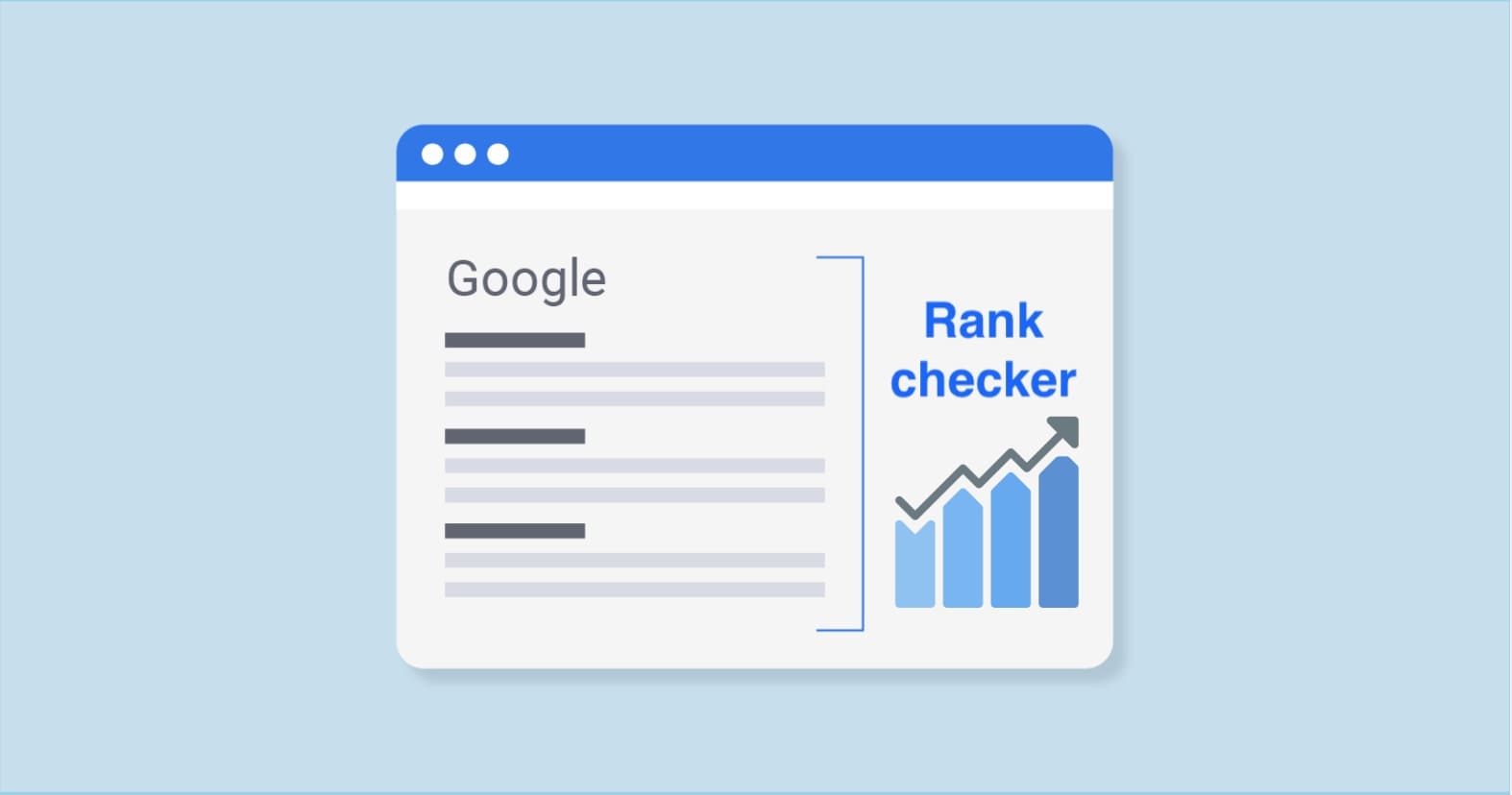
Google calculates the value of a link by considering several factors, including the authority of the linking domain. A single link from a trusted, high-ranking site like Wikipedia is far more powerful than dozens of links from lesser-known websites.
Another factor is the number of outbound links on the referring page. If a page contains many external links, the link juice is divided among them, meaning each individual link passes less value.
Additionally, Google PageRank takes into account the relevance of the linking site, the context of the link within the content, and the diversity of the backlink sources. To maximize PageRank, it’s essential to prioritize high-quality backlinks from authoritative sites while managing your link profile to ensure the greatest impact on your rankings.
How Is PageRank Calculated?
Although the exact formula behind the current Google PageRank algorithm remains a well-kept secret, we can still make informed assumptions based on the original principles. Google learned from past experiences and now guards the details of PageRank closely.
However, by looking at the system’s early concepts, we know that PageRank operates on a logarithmic scale from 0 to 10. Websites with high PageRank scores are considered authoritative, while those with lower scores carry less influence. In the beginning, new websites would start with a PageRank of 0, but in later updates, this starting value was adjusted to 0.25 to better reflect the gradual buildup of authority.
PageRank is now calculated by considering both the quantity and quality of backlinks. Rather than evaluating these aspects separately, Google assesses them together to determine a site’s ranking. Links from high-authority sites carry more weight, while those from less reputable sites contribute less to a website’s overall score.
To understand how this works, imagine four websites—W, X, Y, and Z. W has two links to Z, X links to W twice and Z once, and Y links to Z and another site. The PageRank of Z is calculated by combining the value of each incoming link:
PR(Z) = (2 x PR(W)/2) + PR(X)/3 + PR(Y)/2
This formula accounts for how much link juice is passed to Z from each referring website. If all websites start with 0.25, Z’s final PageRank score would be:
- W contributes 0.125 from each link, totaling 0.25.
- X contributes 0.083 due to its three outgoing links.
- Y contributes 0.125 from one of its two links.
Adding these values results in a PageRank of 0.333 for Z. This scenario illustrates how PageRank is influenced not only by the number of links but by the value each one passes based on its context and the referring page’s authority.
Google’s PageRank Algorithm Formula
What we’ve covered so far is a basic explanation of Google PageRank, but the complete formula developed by Sergey Brin and Larry Page gives a more in-depth view of how PageRank is determined. Here’s the full equation:
PR(A) = (1 – d) + d [PR(T1)/C(T1) + … + PR(Tn)/C(Tn)]
This more advanced calculation takes into account several factors:
- PR(Tn)/C(Tn): PR(Tn) is the authority of each page linking to yours, and C(Tn) is the number of outbound links on that referring page. The more outgoing links a page has, the less link juice each one receives, meaning a portion of the referring page’s power is passed to your page.
- d: The damping factor, typically set at 0.85, is a multiplier that reduces the influence each referring link can pass along. It ensures the power from a page doesn’t get exaggerated.
- (1 – d): This value adds a baseline of probability, indicating the chance that a user might land on a page randomly. It helps balance the system so that the sum of all PageRanks is evenly distributed across the web.
By understanding this formula, you can see how Google PageRank evaluates both the number and quality of inbound links when determining a site’s authority.
Does Google Still Use PageRank?
While PageRank may no longer be the centerpiece of Google’s ranking system, it continues to play a significant role within the broader framework. From its early days to Google’s evolution into a more sophisticated, multi-layered system, the algorithm has remained a foundational element.
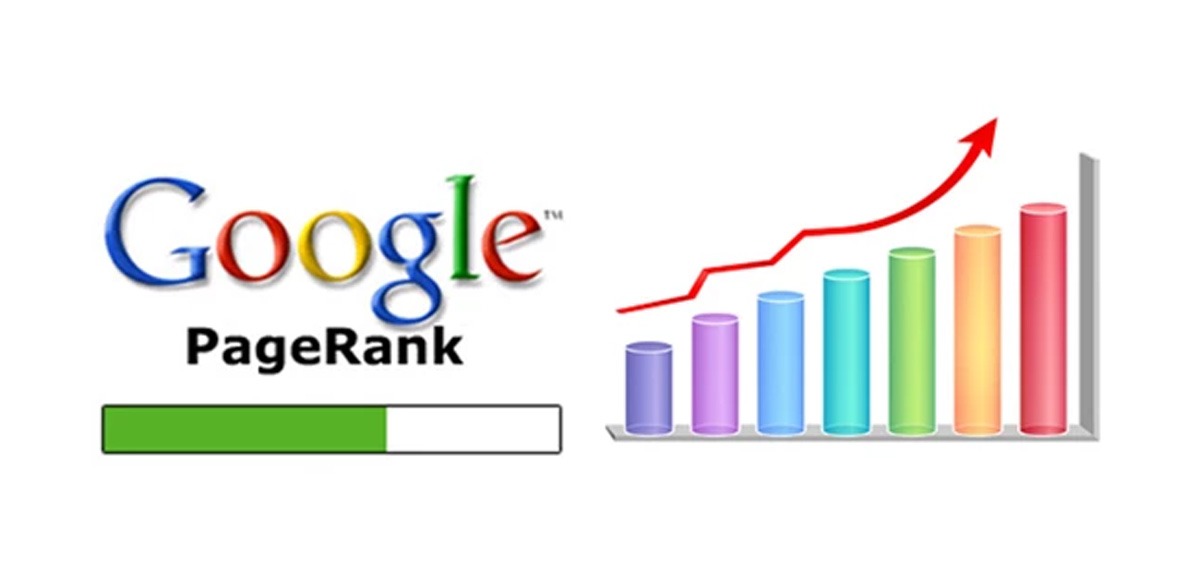
Although Google now uses more than 200 factors to assess rankings, backlinks, a key focus of PageRank, remain one of the most influential signals. In fact, Google has consistently ranked backlinks among its top three ranking factors, reinforcing the importance of links in determining authority.
In 2017, Gary Illyes, a Google trends analyst, confirmed that the algorithm had been in use for 18 years, and though the Google Toolbar (which displayed PageRank scores) was discontinued, the system itself was still in effect. This statement came after the public could no longer track their scores, but the underlying algorithm was very much active.
Things got more complex when the original patent expired in 2019. Adding to the confusion, a former Google employee revealed that the original model had actually been phased out in 2006.
Despite this, Google did not abandon the concept altogether. Instead, the system was refined and continues to operate under a slightly different framework. This adjustment allows it to remain a core element in ranking, albeit integrated into a more modern and complex algorithm.
Practices For Quality Linking
Building links, both within your own content and with external websites, is an essential strategy for improving your Google PageRank. Here are some effective practices to strengthen your approach:
- Focus on Quality: A core piece of advice from Google for ranking well is to prioritize high-quality content. The most effective link building happens when both sites benefit, forming a meaningful connection beyond just ranking. By consistently demonstrating authority, uniqueness, and value, your website becomes an appealing partner for link exchanges, which enhances your Google PageRank.
- Maintain Relevance: It’s vital to ensure that the links you use are timely and relevant to your audience. Google evaluates links based on E-A-T (Expertise, Authority, and Trustworthiness). Not every piece of content online holds equal weight, so linking to authoritative, well-regarded sources in your niche improves both your content’s credibility and your ranking. Incorporating links that reflect this will improve not only your Google PageRank but also your overall content quality.
- Don’t Forget the Human Aspect: While optimizing for algorithms is important, it’s easy to forget that the websites you want to link with are run by real people. OctopusWriters emphasizes that successful link building is about forming genuine relationships with other site owners, not just maximizing algorithms. Approaching link building with a collaborative mindset can build trust and partnerships, which in turn will improve your Google PageRank naturally.
By following these methods, you can improve your site’s visibility and rankings while ensuring the content you create resonates both with algorithms and human readers.
How To Optimize Your Web Pages For Google Directory PageRank Algorithm
Though PageRank is just one part of Google’s ranking algorithm, it continues to be an important factor in determining a web page’s significance. Here’s how you can optimize for better performance:
- Prioritize High-Quality Content: Strong content is key to earning high-quality backlinks. If your website provides valuable and informative content, other websites are more likely to link back, which can boost your Google PageRank.
- Acquire High-Authority Backlinks: Focus on getting links from trusted, high-authority websites. Quality backlinks are essential for improving your site’s ranking, as they signal to Google that your site is credible and relevant.
- Optimize Your Links: Enhance your internal linking strategy by linking related pages within your site, which helps distribute link equity. When linking to external sites, ensure you’re linking to authoritative content. If you link to lower-quality sites, use nofollow tags to avoid passing on any of your PageRank.
- Keep Content Fresh: Regularly updating your website with new content and removing broken links will help maintain your relevance and authority. Google values active, up-to-date websites.
- Track Website Metrics: Even though Google no longer provides PageRank data, you can use third-party tools to estimate your site’s authority. Monitoring these values helps you make informed decisions about your SEO strategy.
These strategies will help boost your site’s performance and visibility, ultimately leading to stronger search rankings.
How To Improve Your Google PageRank
Redirect Broken Pages
Recovering valuable ranking signals like Google PageRank is possible by redirecting outdated pages to newer, more relevant ones. As websites grow, old pages often get left behind without proper redirects in place, which means you could be missing out on the benefits of links that already exist.
To locate these opportunities:
- Paste your domain into Site Explorer (available for free with Ahrefs Webmaster Tools).
- Navigate to the Best by Links report.
- Apply a filter for 404 not found HTTP responses.
This will help you identify pages with broken links so you can easily redirect them, consolidating the link authority and improving your overall SEO performance.
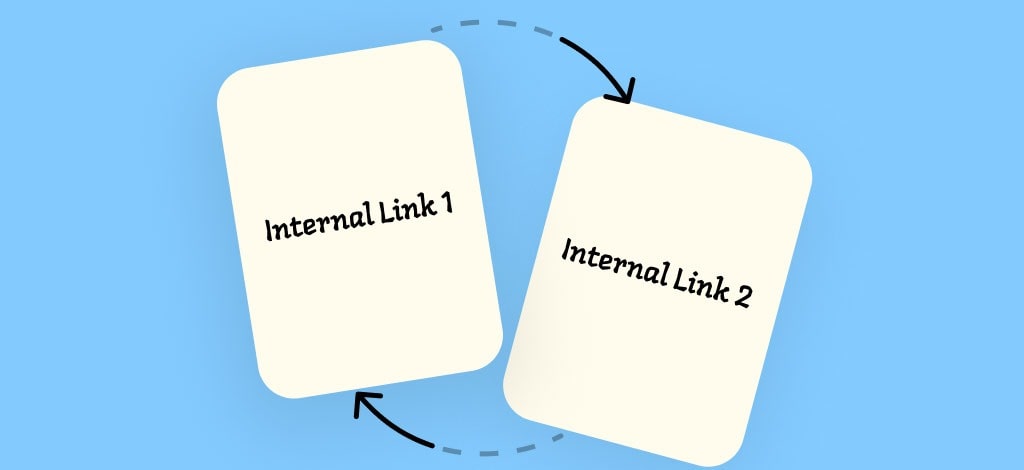
Internal Links
You cannot always control backlinks, as external sites may choose any page or anchor text when linking to your content. But with internal links, you are in full control and can strategically link to the pages that matter most.
Focus on linking to high-priority pages within your site, where it makes sense to do so. This helps ensure those important pages get the attention they deserve.
The Internal Link Opportunities tool within Site Audit can assist you by finding keywords you already rank for. It then suggests relevant places where internal links could be added, making it easier to optimize your site’s internal link structure.
External Links
External links are a crucial factor in enhancing your Google PageRank. When other trusted websites link to your content, it boosts your site’s credibility in the eyes of search engines, leading to improved rankings. To build more external links, focus on creating engaging and valuable content that others will naturally want to link to. Additionally, consider reaching out to industry peers for link-building opportunities. Remember, links from high-quality, authoritative sites will have a bigger impact on your PageRank than sheer quantity.
Obtain More Backlinks
Backlinks are essential to enhancing your Google PageRank, as they play a crucial role in determining your site’s authority. However, the focus should be on acquiring high-quality backlinks from reputable sources rather than just any link.
For instance, if you run a digital marketing website, obtaining a backlink from HubSpot will improve your PageRank much more than a link from an amateur or unrelated blog.
To secure these valuable links, you can employ link-building techniques such as:
- Guest blogging
- Content outreach
- Broken link building
- Resource link building
- HARO (Help a Reporter Out)
It’s equally important to assess the quality of your backlinks. You can use SEO metrics to evaluate how much PageRank value a link passes to your site, including:
- Citation and Trust Flow
- Number of referring IPs
- Number of referring domains
- Active backlinks
- Link strength
These insights will help you focus on backlinks that provide the most value to your site’s ranking.
Avoid Orphan Pages
Orphan pages are web pages that don’t have any internal links leading to them, making it harder for search engines to discover and index those pages. This can harm your SEO because without internal links, search engines might overlook these pages entirely.
If crawlers can’t find orphan pages, it disrupts the transfer of PageRank and can slow down indexing. Additionally, Google won’t be able to determine how these pages fit into the overall hierarchy of your site.
To avoid this issue, ensure that all pages on your website are linked from other relevant pages. This will make your site easier for both users and search engines to navigate, improving your site’s performance in search results.
Focus On Broken Links
Finally, don’t forget to routinely check for and fix any broken links on your site and in backlinks from external sites. If a site links to one of your pages that has been moved or deleted, reach out to the owner and kindly request an update, so the link equity continues to benefit you.
For internal issues, when you encounter broken links on your own website, either update them or create a 301 redirect to the appropriate page. Leaving broken links can interrupt the flow of PageRank, so be proactive in fixing them to keep your SEO strong.
Does A Replacement PageRank Metric Exist?
Although Google no longer provides a tool to directly measure PageRank, OctopusWriters’ Authority Score offers a useful alternative to gauge your website’s authority and ranking potential. The score, ranging from 0 to 100, takes into account several key factors:
- Backlink strength and volume: The quality and number of links pointing to your site.
- Organic traffic: An estimate of the average monthly search traffic coming to your site.
- Spam signals: An analysis of your link profile to ensure it’s natural and not indicative of spam.
While Authority Score isn’t an exact replacement for PageRank, it provides insights into your site’s overall SEO health, offering similar value to what Google’s original metric used to offer.
How To Measure PageRank Score?
While Google no longer provides public access to PageRank data, that doesn’t mean you can’t track your site’s performance in other ways. Several tools now offer similar metrics that help gauge a site’s authority and ranking potential.
Platforms like Ahrefs, Moz, and Semrush offer alternative measures such as Domain Rating or Authority Score. These tools analyze factors like:
- Backlink strength: The quality and quantity of links pointing to your site.
- Organic traffic estimates: How well your site is performing in terms of search visibility.
- Spam assessment: Detecting harmful or low-quality links that could hurt your site’s credibility.
While these metrics aren’t direct replacements for PageRank, they provide a reliable way to assess how well your website ranks and what improvements you can make to boost its authority.
How To Finesse Google PageRank Going Forward
Although PageRank has evolved, it remains a core part of Google’s ranking system. Over the years, the algorithm has been refined to focus more on user experience and delivering the most relevant search results.
As PageRank becomes smarter, old SEO tactics, like purchasing backlinks from random sites, no longer work. The algorithm can now easily detect low-quality links, making link building a more challenging task for SEO professionals. In fact, 41% of SEO experts report link building as one of the most difficult aspects of SEO today.
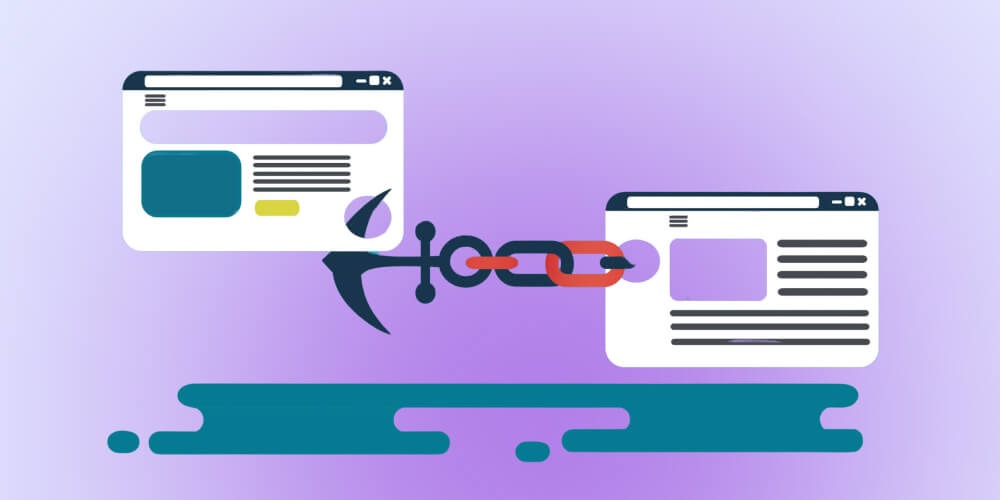
But with OctopusWriters, you don’t have to navigate these challenges alone. Our team will help you build natural, high-value backlinks that align with PageRank’s updated standards. We’ll also audit your existing backlinks to remove harmful links and optimize your profile.
Take your SEO efforts to the next level by partnering with OctopusWriters for expert link-building
Can PageRank Be Manipulated?
Because Google PageRank relies heavily on backlinks, some less ethical SEO firms may try to sell links as a quick way to boost a website’s ranking. For a fee, they might offer backlinks from high-traffic sites, promising to increase both traffic and improve rankings.
However, Google discourages buying links to manipulate rankings and will penalize websites that engage in such practices. Penalties may include reducing the site’s ranking or even removing it from search results entirely.
A safer alternative is using the nofollow attribute on purchased links. This tells Google not to pass any ranking value through the link, but it still allows you to gain traffic without violating guidelines.
To build long-term ranking success, the best approach is to consistently create high-quality content and acquire organic links from reputable websites. This will naturally increase your site’s authority and improve its position in search engine results.
Frequently Asked Questions About Google PageRank
How Often Is PageRank Updated?
Since Google no longer shares PageRank scores, it’s unclear how often pages are updated. However, many believe it happens around every three to four months based on past trends.
Which One Should You Do To Increase Your Google Page Rank?
To increase your Google PageRank, focus on these key steps:
- Earn high-quality backlinks from authoritative sites in your niche.
- Create valuable content that attracts natural links.
- Use internal linking to distribute PageRank across your site.
- Disavow low-quality links to maintain a clean backlink profile.
- Ensure paid links use the nofollow attribute to avoid penalties.
These strategies will help improve your site’s authority and PageRank over time.
What is the algorithm behind Google’s PageRank?
PR(A) = (1 – d) + d [PR(T1) / C(T1) + PR(T2) / C(T2) + … + PR(Tn) / C(Tn)]
Here:
- PR(A) refers to the PageRank of page A.
- d is the damping factor, commonly set at 0.85.
- PR(Tn) represents the PageRank of pages T1 through Tn, which link to page A.
- C(Tn) is the total number of outgoing links on page Tn.
In simple terms, this formula calculates the PageRank of a page by considering the quality of the links pointing to it, factoring in how many other links are on the linking pages. The damping factor models the likelihood that a random user will continue clicking on links rather than stopping.
Should We Use Google PageRank In 2024?
In 2024, Google PageRank is no longer a public tool, but the principles behind it still play a key role in Google’s ranking system. Google stopped showing PageRank scores in 2016, and while it’s still part of the algorithm, it is now just one of many factors that affect rankings.
Instead of focusing on PageRank, it is more effective to prioritize essential SEO strategies like:
- Building strong backlinks from credible websites to enhance your site’s authority.
- Creating valuable content that naturally attracts links and keeps users engaged.
- Improving user experience by focusing on factors like site speed, mobile optimization, and overall structure.
Although you can no longer track PageRank, the foundational principles of acquiring high-quality backlinks and maintaining a well organized site are still crucial for SEO success in 2024.
Conclusion
To wrap up, although Google PageRank isn’t a visible metric anymore, its influence on SEO remains. By focusing on key strategies such as building authoritative backlinks and improving your site’s structure, you can boost your website’s authority. At OctopusWriters, we believe these tactics can help you achieve lasting success in the ever-changing SEO landscape.

